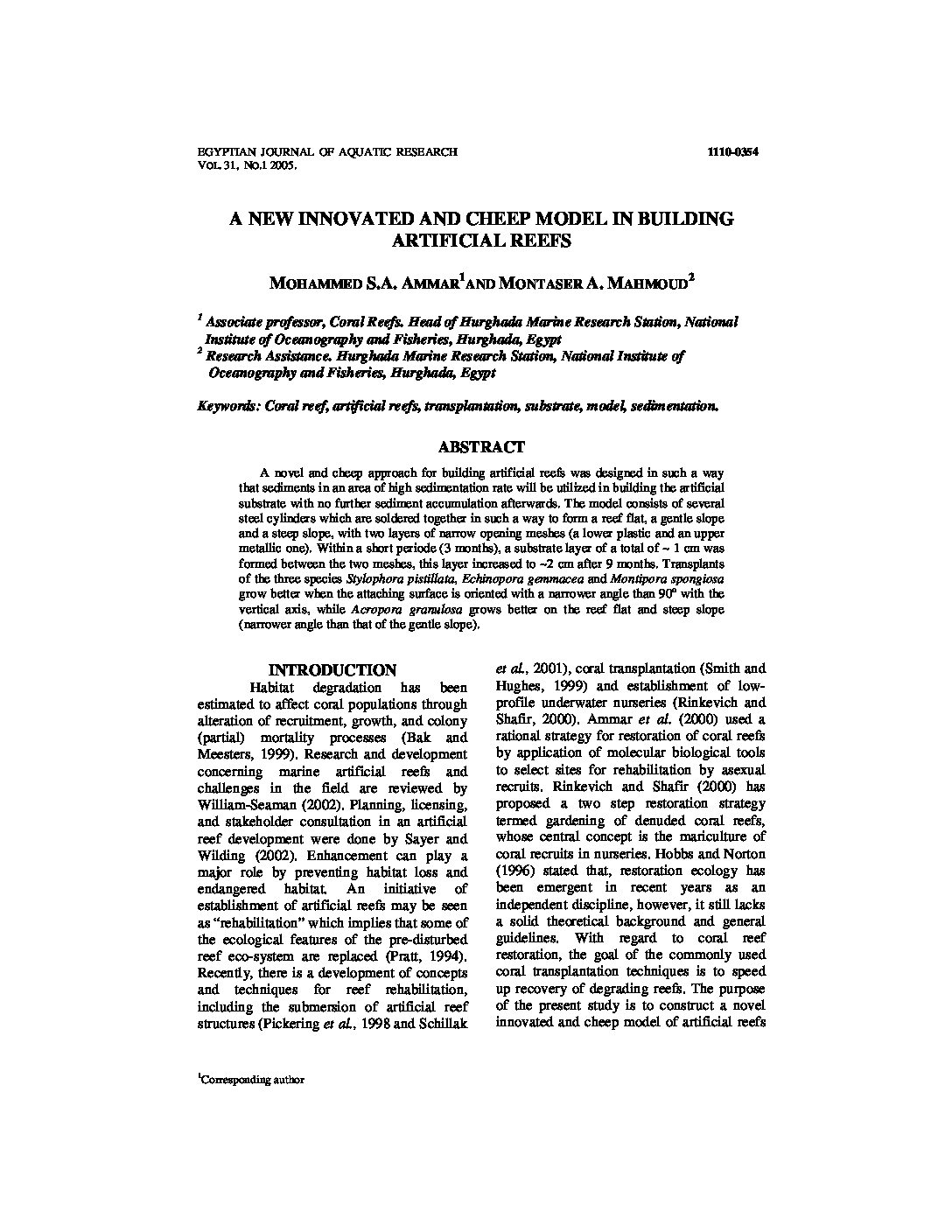Categories
vol-31THE POTENTIAL CONTRIBUTION OF SOME AQUACULTURE
PRACTICES TO THE ARABIAN FISHERIES INDUSTRY
UTILIZING MARINE WATERS
FEISAL A. BUKHARI
Fisheries Research Center– Ministry of Agriculture
P.O. Box 52681 – Jeddah 21573, S.A.
International Conference On Aquatic Resources Of The Arab Region
7-9th May 2005 – Alexandria
Key words: Aquaculture, Rabbit fish, white prawn poly culture, tiger shrimp.
ABSTRACT
Two successful aquaculture practices experimentally and commercially of the White
Indian Prawn Penaeus indicus and the Rabbitfish Siganus rivulatus have been
demonstrated along the coastal lines of Saudi Arabia; The first practice incorporated on
shore pond culture of P. indicus which took place on both coastal lines of the Red Sea and
the Arabian Gulf. The second practice was the off shore floating finfish cage culture of S.
rivulatus which took place on the coastal lagoons of the Red Sea. Shrimp pond production
of P. indicus was up to 10 tons per ha per year. Finfish (S. rivulatus) production was 20
kg/m³. Both practices have two production cycles per year.
If only 10% of the total on shore and off shore coastal lines of the Arabian countries
(23441 km), were subjected to aquaculture investments; the hypothetical production
contribution will exceed 1600 tons of P. indicus and 400.000 tons of S. rivulatus per year
respectively.
The above species are examples, other species have potential for production on a large
scale, such as Tilapia, Grouper and Seabass.
Results of an additional practice concluded a commercial potentiality of polyculture as
a mean of increasing production is promising for Penaeid shrimp and S. rivulatus, since an
experiment has proven the possibility of rearing both species together in the same facility
utilizing Red Sea water for the same culture period.







